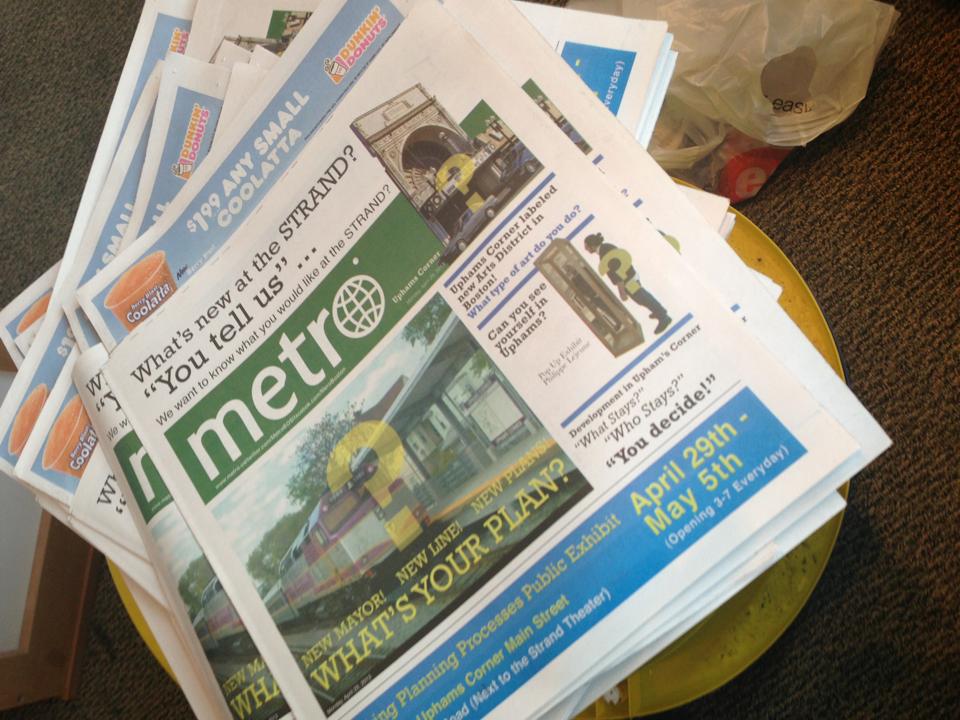
I checked off boxes next to the features I like in outdoor public places at a recent community meeting for northern New Jersey. I was excited about being a part of planning the future of a public plaza in an area I care deeply about.
The meeting lasted about two hours, but for me it was over too soon. I knew there were ideas left unsaid and many voices left unheard.
Nupur Chaudhury, the community and planning health manager at Community Solutions in Brownsville, Brooklyn, said recently at a Project for Public Spaces panel, “We work at the invitation of residents, with the understanding that they have a deep understanding not only of the problems facing their community, but of the best solutions.”
It's with this truth in mind that I look for methods of community engagement and was very taken by the work of the Design Studio for Social Intervention (ds4si). Their recent Making Planning Processes Public pop-up exhibit in Boston's Upham's Corner neighborhood was created out of their mission to be a creativity lab for social justice work in the public sphere.
Upham’s Corner is going through two major planning processes, one around a rail station, and the other a redesign of a major roadway, Columbia Avenue.
“We thought it essential to get out there and make these planning processes public by informing people of what had already been decided, tell them of future planning meetings and to take in as much public input as possible about certain aspects of the planning that we, as the studio, could relay back to the city departments running these processes,” Diego Perez Lacrera, of ds4si, shared with me in an email.
The studio was able to connect with residents of all ages in multiple places and ways by taking their exhibit about planning in the neighborhood to the streets, creating a presence over the course of a week, and commissioning two local artists for the project.
“Artists have a set of tools and ways thinking about complexity. They can be a part of our social justice and planning work beyond just making a banner or flyer,” said Lori Lobenstine, a principal at ds42i.
Local artist Cedric Douglas, created a cover for the morning Metro newspaper that the ds4si team distributed asking, “What’s you plan?” Douglas also designed giant interactive checks that read, “What would you do with $3 million to improve Upham’s Corner?”
Three million is the approximate amount slated to build a 3-foot high fence down the middle of Columbia Avenue to prevent jaywalking, Lobenstine told me. Many people they with spoke had not heard about this project prior to the exhibit. The checks were placed at key corners in the neighborhood and residents were able to fill in their own answers and respond to their neighbor’s ideas.
Work by a second artist, Phillpe Lejuene, helped attract many people to the exhibit. According to Perez Lacrera, “His piece used an angled mirror to create a moment of confusion that lured people into looking closer, once they look closer they saw the words ‘Do You See Yourself’ and on the other side of the mirror it continued with, ‘in Uphams Corner'.”
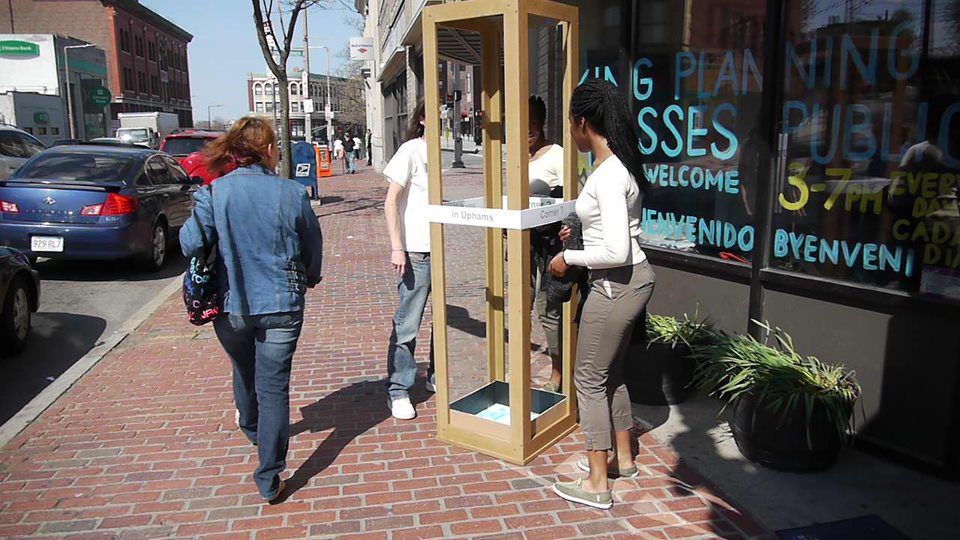
(Photos courtesy of Diego Perez Lacera)

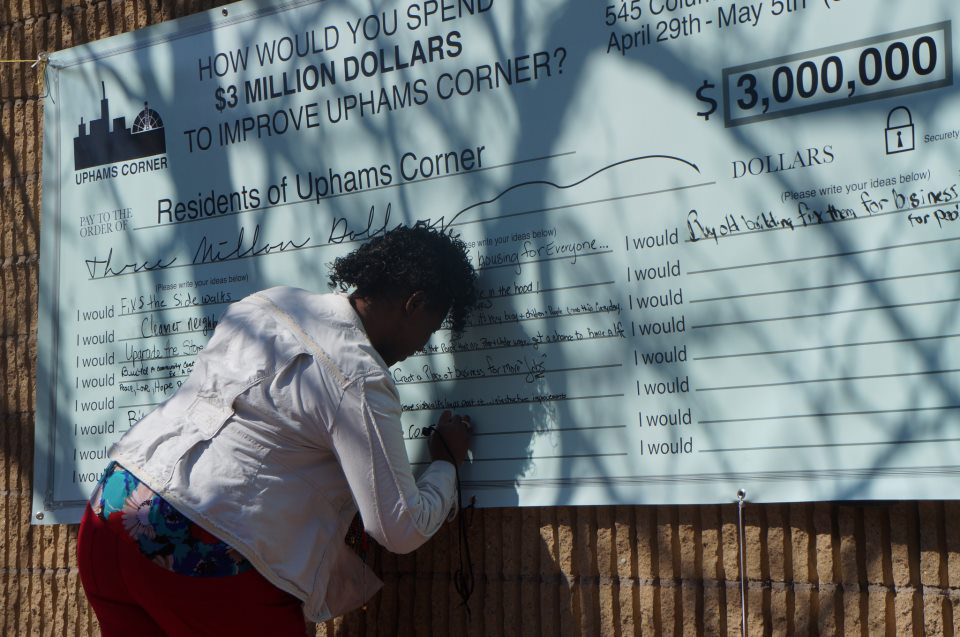

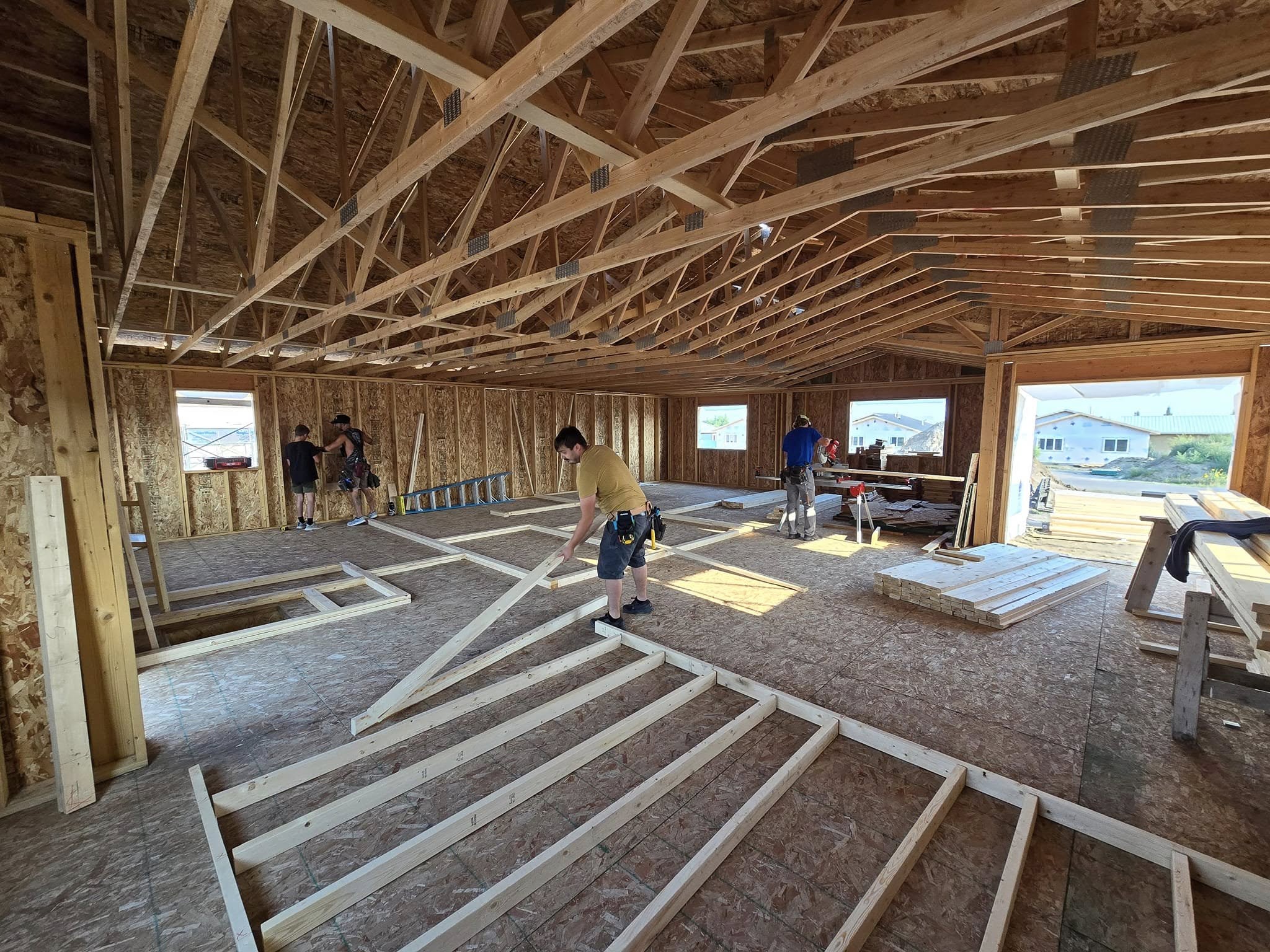
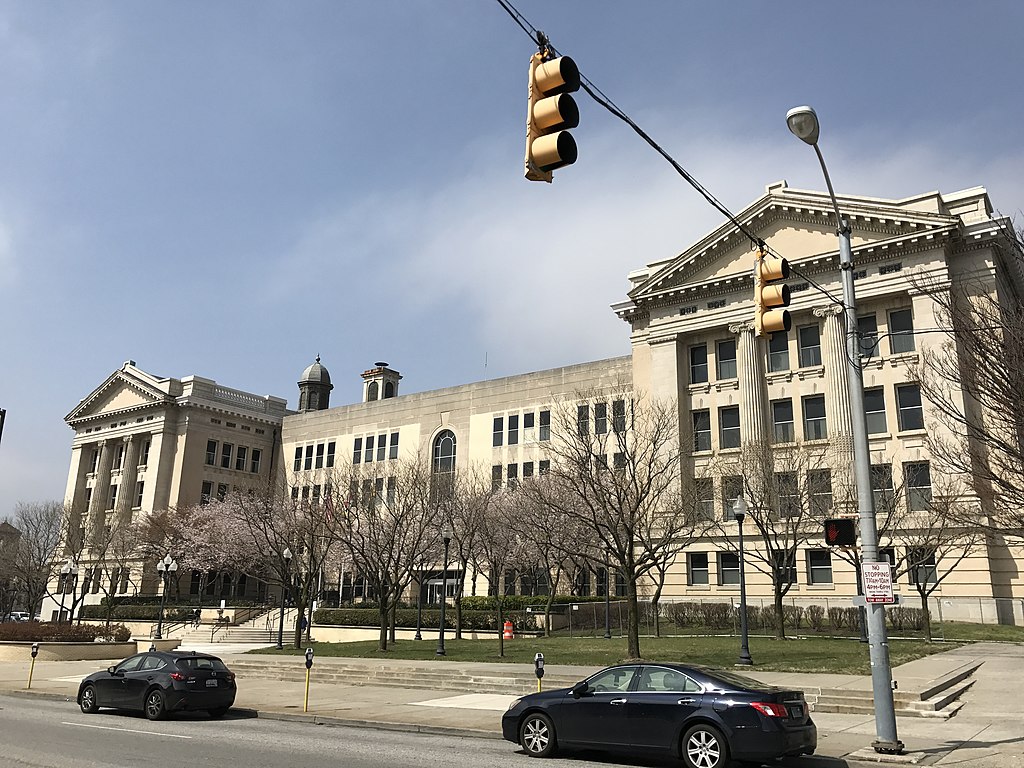
Comments